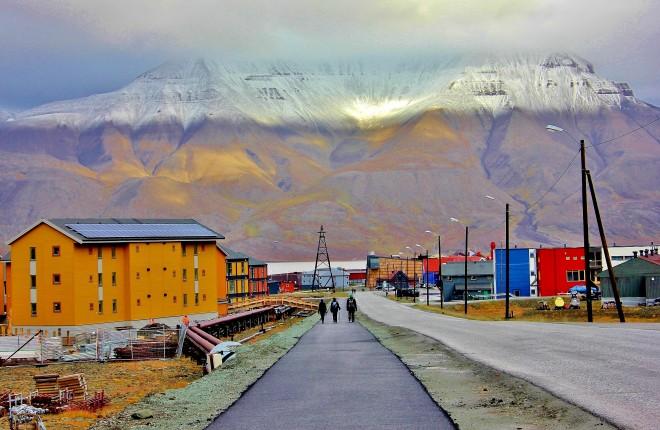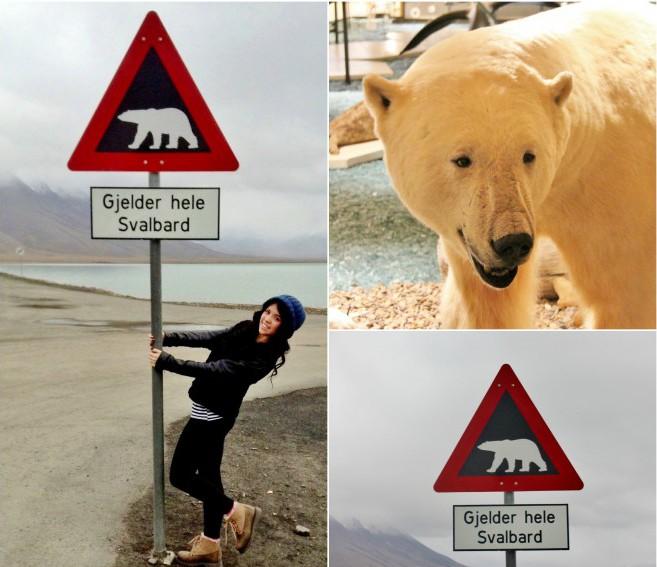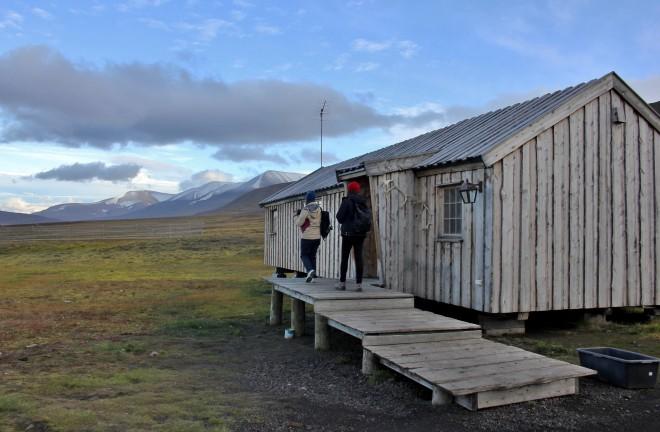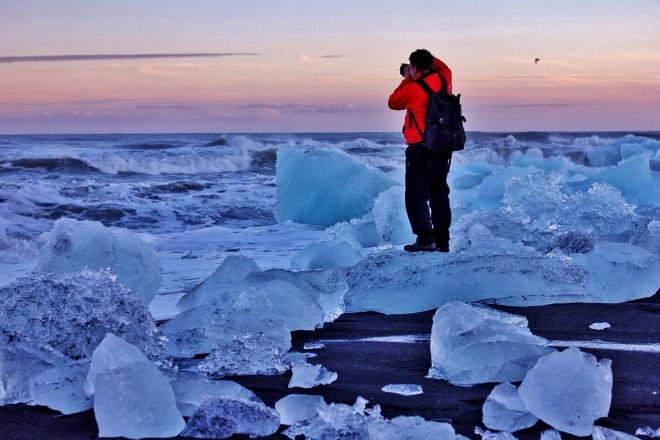Longyearbyen is the only town in Spitsbergen, a glacier-covered island belonging to the remote Svalbard archipelago which is also known as the last stop before the North Pole. Complete darkness reigns from early November to the beginning of February when a hiatus of day and night manages to break through the Polar Night. However, this small gap of normality doesn’t last long, as from mid-April eternal daylight known as the Midnight Sun persists until late August. For most, both periods are a welcomed novelty but under a prolonged duration, I’m sure the novelty would eventually dissipate as the body’s craving to align sleep according to natural daylight takes over.

Longyearbyen town centre (The Culture Map)
With a population of just over 2000 people, the community of Longyearbyen is small yet strikingly unified. Brightly painted houses cluster together in neat rows to reprieve the solitude otherwise present in this high Arctic landscape where even trees cannot grow. My guide, Anika, who is originally from Australia, is keen to tell me that despite its minuscule population by any comparison it is a surprisingly multicultural community with over forty different nationalities. Later, I learn Anika has been living in Spitsbergen for the last seven years: she never imagined staying for so long, but she also never imagined falling in love here either.
MORE: What’s It Like Driving Your Own Team of Husky Dogs in the Arctic of Norway?
Anika has already surpassed the average length of time a person spends living in Svalbard by one year and has no desire to leave anytime soon – in fact she told me last week that she’s bought a place here with her boyfriend! It has never been a place where generations after generations settle; the only people who lived here were polar scientists and miners, along with a handful of explorers using the area as a base before expeditions to the North Pole. However, things changed in 1975 when Svalbard’s first and only international airport opened just outside Longyearbyen, claiming the title of the northernmost airport in the world with public scheduled flights (when you are here, you will soon discover it is the ‘northernmost everything’).

Longyearbyen (The Culture Map)
With Spitsbergen now being less isolated, tourism has slowly and steadily increased but this doesn’t mean people can head here without doing practical research, it’s important to book a place to stay beforehand as beds are likely to be fully occupied. There isn’t a vast selection of hotels, and due to its strict policy of preserving the unique wildlife and environment, it wants to remain that way. I stayed in the Radisson Blu Hotel which is well located, has friendly staff, an excellent buffet breakfast which the Scans are famous for, and there’s also a lively pub. You'll be happy to hear that Svalbard is a duty free zone so alcohol is a little cheaper compared to the monstrous prices of mainland Norway!
You can expect very good food in Longyearbyen, and where possible, it is locally and organically reared. This means reindeer is a very common source of protein, and cloudberries often make up the key ingredient for dessert.
An important note to add is that polar bears are highly revered and protected animals of Svalbard, so if one is seen approaching humans a warning shot is given off to scare away the animal first. Shooting a polar bear is always the last resort after all other methods to deter it have failed. If this does happen, it needs to be reported to the police immediately. Adventurers who come for expeditions in Svalbard will place tripwire around their camping area when they sleep, but the most reliable practise is to have someone on night-watch as well as putting down tripwire.

Spitsbergen wooden building (The Culture Map)
Leaving Longyearbyen is something every visitor must do to experience the exquisite clarity of the fjords reflecting the light of the Midnight Sun, or one of the many mountainous scenes. Travel by husky dogs, a common and eco-friendly mode of transport used by visitors and locals alike, or head out on a boat to explore the incredible glacial landscape. If there’s one image that can make humans look small and insignificant against nature, it’s the imposing vision of a glacier: a humbling reminder of the earth’s movements.
Copyright © 2014 by The Culture Map. This article was written by Shing Lin Yoong and originally published at The Culture Map





